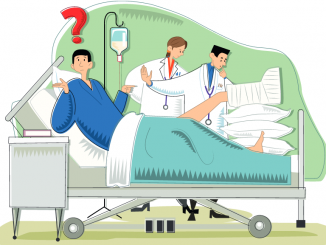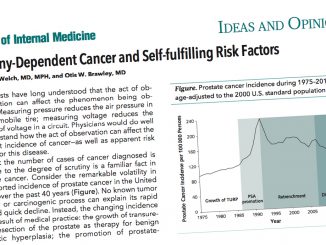How far can private and philanthropic providers meet the rapidly rising need for cancer detection, treatment and care in low- and middle-income countries? Sandhya Srinivasan reports on a high-profile debate involving economists, policy makers, clinicians and a range of healthcare providers.
India is a technically sophisticated country and an important player in science and medicine. It is home to a cancer centre of international standing, it has had a cancer plan for more than 30 years, and a primary healthcare system designed to operate at village and district level. And yet cervical cancer – one of the easiest to screen for and treat – still claims the lives of around 70,000 women in India every year (Indian J Med Paediatr Oncol 2011, 32:125–132).
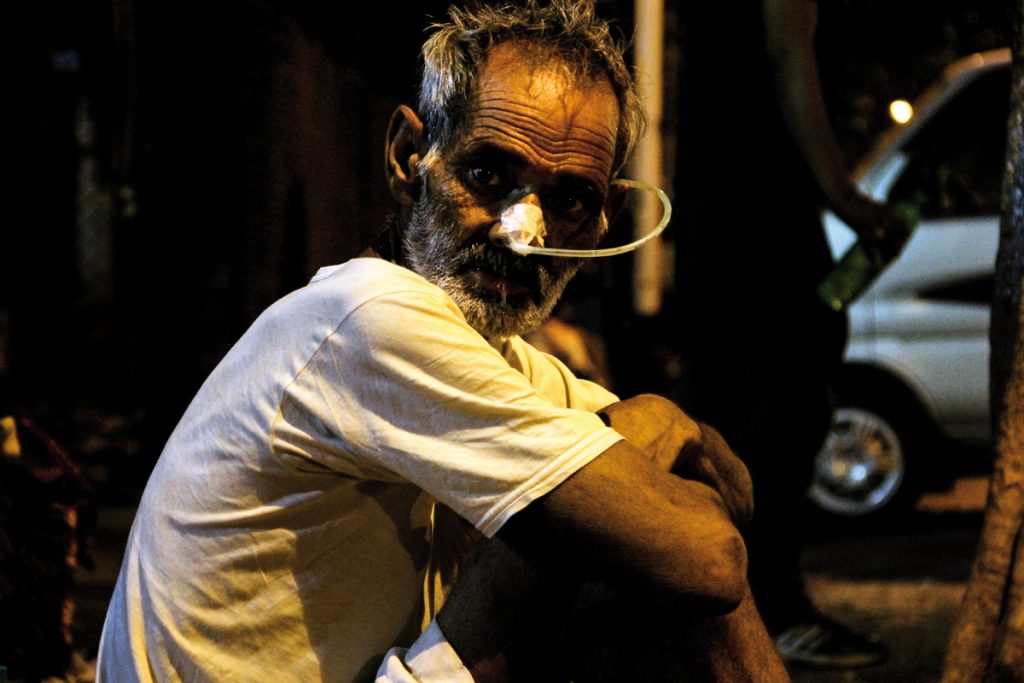
Around 1.45 million Indians developed cancer in 2016, and these numbers are expected to increase steadily, according to the Indian Council of Medical Research. For the families affected, the out-of-pocket cost of paying for treatment and care has been described in one key study as ‘catastrophic’ in three out of four cases, with families being forced to borrow heavily and cut back on what are often already stretched daily household expenses (Tropical Med Int Health 2016, 21:1019–28).
Over one third of cancers are caused by tobacco use, and these, in particular, affect the poor the most. Tobacco use among men is twice as common among those with little or no formal education, and more than twice as common among the lowest wealth quintile compared to the highest.
Everyone needs access to cancer prevention, and everyone with cancer needs access to early diagnosis and, to treatment and care.
Should this healthcare be considered a right of every citizen, or a commodity to be bought and sold on the market? This was the topic of a conference organised by the Tata Memorial Centre (TMC) in Mumbai in January, under the title: “Healthcare: a commodity or basic human need?”
The public health community in India has engaged with the issue of universal access to healthcare for decades, but this was the first time it had been discussed in the context of a condition whose treatment has largely depended on highly trained doctors, sophisticated treatments and expensive drugs.
Cancer and the commitment to universal healthcare
Universal healthcare (UHC), described in a 2012 document from the Indian government’s Planning Commission, is defined as “assured access to a defined essential range of medicines and treatment at an affordable price, which should be entirely free for a large percentage of the population.” One element of this care, naturally, is cancer care, both prevention and treatment.
India launched its first substantive national cancer programme in 1984 with the objectives of controlling tobacco use, promoting early detection of certain cancers, improving treatment facilities, and providing palliative care. Services are meant to be available through an extensive three-tiered network of primary health centres at the village level, district hospitals for limited diagnostics as well as medical and surgical care and medical college hospitals providing specialised treatments including for cancer.
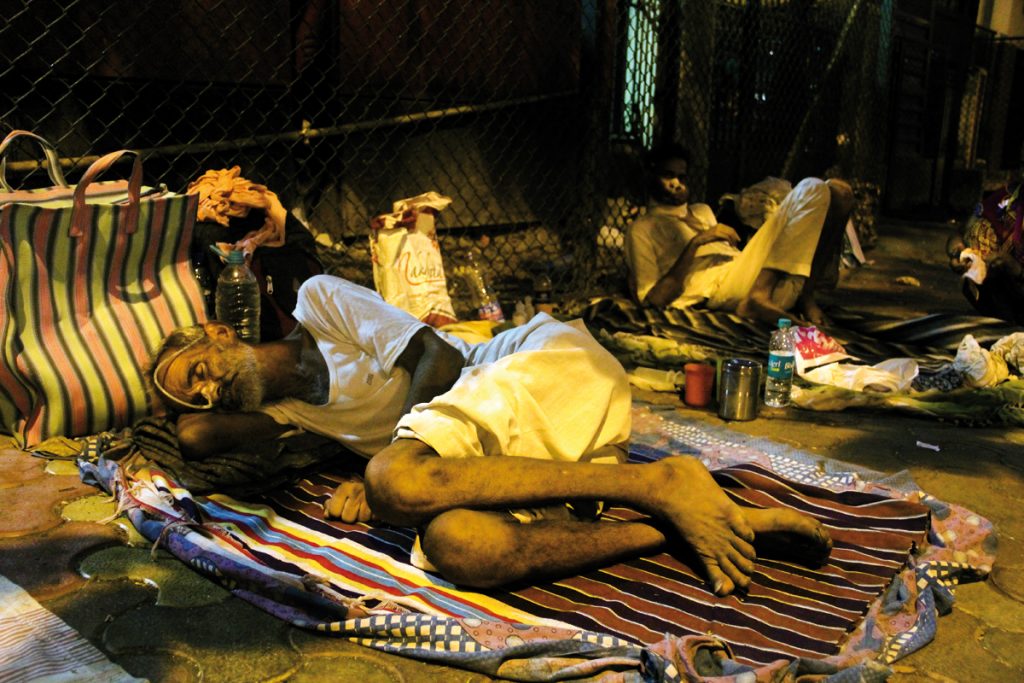 In addition, 27 regional cancer centres and eight apex cancer centres such as TMC provide specialised cancer care. Since 2012, a ‘national cancer grid’ has linked centres across the country to set uniform standards as well as share expertise in cancer care. In January 2017, TMC launched a ‘virtual tumour board’, in which experts in various fields discuss complex cancer cases and offer online opinions to centres anywhere in the network.
In addition, 27 regional cancer centres and eight apex cancer centres such as TMC provide specialised cancer care. Since 2012, a ‘national cancer grid’ has linked centres across the country to set uniform standards as well as share expertise in cancer care. In January 2017, TMC launched a ‘virtual tumour board’, in which experts in various fields discuss complex cancer cases and offer online opinions to centres anywhere in the network.
Palliative care is run largely by voluntary organisations and charitable foundations – though some people argue that this should be the government’s responsibility.
“Public services have been systematically destroyed”
On paper, therefore, India would seem to be doing a lot right. However, the realities on the ground, at least at present, are very different. Government services have long been starved of funds and humanpower, other than for selected programmes such as disease control and family planning.
The cancer care scenario is no different. The majority of cancers are diagnosed in an advanced stage of the disease. “In the absence of screening, nearly 70% of cervical cancer patients in India present at stages III and IV (Indian J Med Paediatr Oncol 2011, 32:125–132).
“While India has been overtaking other countries in the progress of its real income, it has been solidly overtaken in terms of social indicators by many of the same countries”
Amartya Sen, Economist, Nobel laureate
The same paper notes that nearly 20% of women who develop cervical cancer die within the first year of diagnosis, and the five-year survival rate is 50%. As for prevention, only the southern state of Tamil Nadu has conducted screening at the community level for some years. Systematic statewide screening and early treatment for cervical and oral cancer began in the northern state of Punjab in 2016, the same time that the national government announced plans to screen for oral, cervical and breast cancer, starting with 100 districts.
Despite its promises, the government has never made a commitment to healthcare, spending just 1.04% of its gross domestic product on health services compared to the WHO-recommended 5%, Cuba’s 10.6% and Brazil’s 3.8%. This amounts to only Rs 957 (€13.5) per capita, of which around 30% comes from the central government. More than 70% of healthcare expenditure (or 3.06% of GDP) is in the private sector, which operates without any regulation and is known to promote expensive, unnecessary and sometimes dangerous treatments that benefit doctors and the healthcare industry rather than patients. Private doctors don’t like to be regulated, noted surgeon Sanjay Nagral at the TMC conference. As private and social insurance cover less than 20% of the population, most healthcare spending is out of pocket.
“Industry should be approached to start new projects in public–private partnerships and the pharmaceutical industry fund department chairs in public hospitals”
Sanjay Oak, formerly Dean of Seth GS Medical College, Mumbai
The problem, as presented at the conference by Professor T Sundararaman, Dean of the School of Health Systems Studies at the Tata Institute of Social Sciences, is that the private sector is being seen as the only option for care. “Public services have been systematically destroyed, and primary health centres, the backbone of the healthcare system, have been downsized to serve only maternal and child health.”
In fact, many health activists believe that universal healthcare is just an empty slogan. Amit Sengupta of the Jan Swasthya Abhiyan, a network of community health organisations in India, writes, “The … progressive withdrawal of support to public services is part of a particular vision of UHC. Here, the role of publicly provided health services is replaced by outsourced services to the private sector. Insurance mechanisms and not public provisioning is the hallmark of this approach,” (The Hindu, February 6, 2016).
By contrast, Cuba, which was among the national models of universal healthcare presented on the first day of the TMC conference (the others being Brazil, Japan, Iran, Thailand, Zambia and France), has publicly financed and publicly provided care.
The commitment to public health within India is seen in the southern state of Kerala, with health indicators close to those in high income countries. Kerala’s infant mortality rate in 2007 was 14/1,000 live births – one-fourth the national average. The 2015-16 National Family Health Survey (based on a small sample size) reports that Kerala’s infant mortality rate is now 6/1,000 live births, comparable to the US.
In addition to universal healthcare, the Kerala state government has long been committed to multiple social benefits, including a more extensive public distribution service of food grains, all of which contribute to health. It also runs the oldest, and only major community-based palliative care programme in the country.
Financial burden of treatment
Health economist Ajay Mahal reported on a study finding that median expenditure for inpatient cancer care in 2014 was $357 per hospitalisation, and that three out of four cancer patients experience catastrophic expenses – healthcare expenses that forced them to reduce routine household expenses. In more than one third of cases, the out of pocket costs of care are raised through borrowing.
While government hospital expenses were lower, patients still had to spend substantial amounts. In another paper, Mahal found that a single hospital stay for cancer treatment in a public facility cost Rs 11,659, €165, almost 50% of the average per capita income of Rs 25,320. About one quarter of that money goes on medicines. While India is a major supplier of generic drugs internationally, the price of medicines is still an enormous burden for Indians, especially poorer families.
In the absence of affordable access to cancer care, patients come from all over India to metropolitan cities, and it is common to see patients living with their families on the pavement outside the government’s Tata Memorial Hospital in central Mumbai, while waiting for surgery or between treatment cycles. Even though the hospital has differential levels of payment and free services for those who cannot pay, many families must look for some money from charities, adding to the stress and anxiety of coping with this disease.
Economic growth is inversely proportionate to people’s health
The need for publicly funded universal healthcare was stressed by economist and philosopher Amartya Sen when delivering the inaugural address at the conference. “While India has been overtaking other countries in the progress of its real income, it has been solidly overtaken in terms of social indicators by many of the same countries, even in the region of south Asia itself,” he said. Bangladesh and Nepal have incomes much lower than India’s but they have lower infant mortality rates. “A couple of decades ago, India had the second best indicators of six countries [India, Pakistan, Bangladesh, Sri Lanka, Nepal and Bhutan]. Today it has the second worst indicators of the same countries, with the worst being Pakistan.”
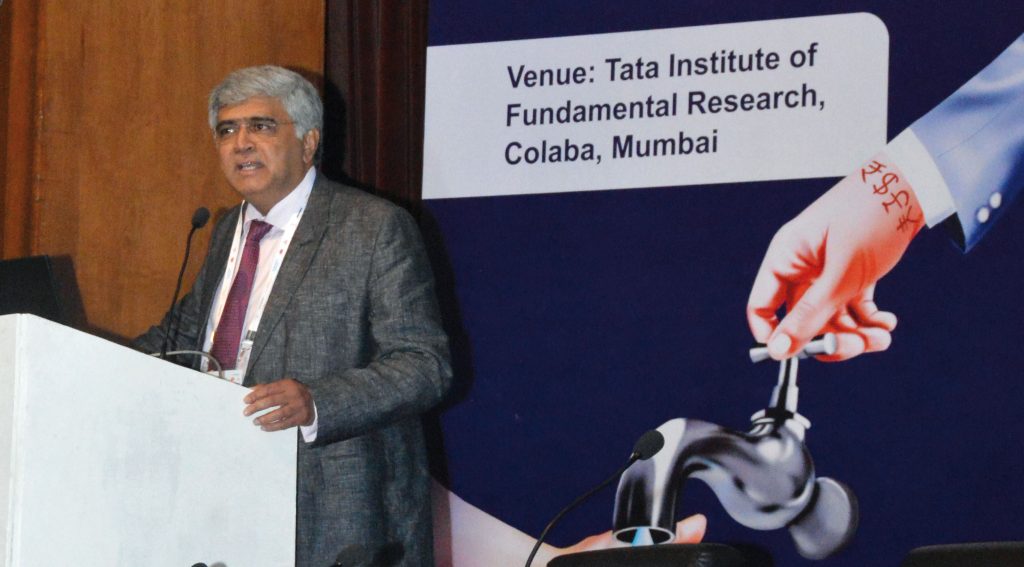
Some of this can be attributed to the government acceptance in 1993 of World Bank prescriptions that limited public services to a package of “essential” services – contraception, immunisation and disease control – with the rest largely left to private services. Private healthcare services, well established long before 1993, have flourished over the last two and a half decades.
Among the actions Sen identified as critical to ensure universal healthcare: recognise the role of public health including social determinants of health such as nutrition, sanitation and social equity; put more government money into health – “no country has successfully provided universal health coverage without the strong support and commitment of the public health sector”; and improve the functioning of state services rather than handing them over to the private sector. He said the “private pay model”, in which the government reimburses private hospitals for certain treatments for people below the poverty line, further reduced the little public money that is spent on healthcare, in addition to creating “perverse incentives” for doctors to conduct irrational treatments.
Models of healthcare provision
Panellists in the afternoon of the first day discussed the main question of the conference – is health care a commodity or a basic human right? – debating the merits and demerits of various models of healthcare provisioning.
“Punjab set up a state-wide cancer control programme, supported by a special fund created in 2013 to increase infrastructure for cancer care”
Vini Mahajan, Health Secretary, Punjab
Sanjay Oak, formerly dean of Seth GS Medical College and King Edward Memorial Hospital in Mumbai, spoke on the public hospital, which used to provide free care for all patients, but has over the years forced patients to pay for many tests, medicines and procedures. He noted that in his 29 years in public health, “Public hospitals have never treated healthcare as a commodity.” The difficulties are widespread corruption, increasing costs, and staff attrition to the lucrative private sector. His suggestions, that industry be approached to start new projects in public–private partnerships and the pharmaceutical industry fund department chairs in public hospitals, were not well received by some sections of the audience.
Rajendra Badwe, Director of the Tata Memorial Centre, described the functioning of this national cancer care institution. With the bulk of its funding coming from the government, TMC and its satellite Advanced Centre for Treatment, Research and Education in Cancer (ATREC) provide “comprehensive, state of the art” care to 67,000 new patients and 450,000 follow-ups each year. The TMC also coordinates a countrywide ‘hub and spoke’ network – of major public and private centres which provide specialised care, and regional units which follow up cases and run basic diagnostic and treatment services, together reaching about 50% of the cancer cases treated in the country.
Patients at TMC / ATREC pay at different rates for their care according to what they can afford, with 60% receiving free or highly subsidised treatment. Of their Rs 3 billion (€ 44 million) operational expenses for research and patient care, patients’ payments amount to about Rs 1.7 billion. The government gives a fixed grant of Rs 1 billion for research and education, and also covers the shortfall of Rs 300 million.
The conference also heard from Vini Mahajan, health secretary for Punjab state since 2011. She described the government’s progress in setting up a state-wide cancer control programme, supported by a special fund created in 2013 to increase infrastructure for cancer care. Expansion included new treatment facilities, some in public–private partnerships, training district hospitals in providing chemotherapy, schemes for cashless treatment, telemedicine, and recently established palliative care services through the NGO CanSupport. Screening for oral, breast and cervical cancer, using simple techniques like visual inspection with acetic acid and clinical breast examination, initially implemented in a few districts, was expanded in 2016 to cover the entire state. HPV vaccination is being conducted in districts with the highest incidence of cervical cancer.
The immediate challenge for the cancer control programme, said Mahajan, is to get information on government schemes to poor families who need it the most. Much of the Punjab programme, extensive as it is, is new, and has therefore not yet been evaluated.
A private sector model for cancer care was presented by Ajai Kumar, the CEO of Health Care Global, who described the 22 comprehensive cancer care centres it runs, which treat 700,000 new cases a year.
“The CMC model relies on salaries being low, with tight control over costs. We cannot use health to make money off people’s misery”
Sunil Chandy, Director, Christian Medical College
An independent, not-for-profit model of healthcare delivery was presented by Sunil Chandy of the Christian Medical College (CMC) in Vellore, Tamil Nadu. He talked about the Christian Medical College programme, which runs some 200 hospitals across Tamil Nadu on the principle that healthcare is a service, not a business. Poor patients’ care is subsidised by those who can pay. The CMC model relies on salaries being low, with tight control over costs. “We cannot use health to make money off people’s misery,” said Chandy.
Another not-for-profit model, also from Tamil Nadu, is Aravind Eyecare, which was set up as a trust, and provides high quality, low cost eye care, also running outpatient services in the state’s primary health centres.
The trust conducts 45% of all ocular lens replacements in the state – most of these free of charge or heavily subsidised. It manufactures its own lenses for $2, compared to the market price of $150, and runs on economies of scale. Many of its services are performed by trained high school graduates rather than doctors and nurses. Aravind’s co-founder, Perumalsamy Nambaperumalsamy, said they were self-sufficient in their operational expenses, but they receive support from funding organisations, and also take the state’s support for some government programmes.
“Public health spending is low because tax collections are low”
Nachiket Mor, Bill & Melinda Gates Foundation
The question that emerged was: how much do these models ensure people’s access to care, and are they sustainable? The two non-governmental schemes work in specific circumstances for specific purposes, and both depend on personal commitment and hidden subsidies that may not be replicable. As for publicly-funded models, current government funding is inadequate. TMC, while it gets substantial government funding, charges many of its patients, and still falls short of its running costs.
Public hospitals are increasingly bridging their funding gaps by requiring patients to pay for some medicines, tests and procedures. Programmes like the National Rural Health Mission are suffering from cutbacks. State-supported insurance schemes give limited coverage and are difficult to access. Public–private partnerships and industry funding for government hospitals are likely to benefit industry more than patients. With government encouragement to private health services, most patients pay for care out of their own pocket, forcing many people to either borrow for treatment or just do without it.
There were, naturally, some heated discussions on healthcare finance. Shankar Prinja, from the Postgraduate Institute of Medical Education and Research in Chandigarh, spoke on mechanisms of financial risk protection to prevent catastrophic health expenditure – out-of-pocket expenses that affect other household spending or result in impoverishment – which affects a very large number of Indians.
Nachiket Mor, of the Bill and Melinda Gates Foundation, suggested that public health spending is low because tax collections are low. Alok Kumar of the government think tank Niti Aayog calculated that primary, secondary and tertiary services together would cost Rs 2,238 (€37) per capita which, he argued, would not be possible through public finance alone (though it would actually be much lower than the WHO-recommended 5% of GDP). The way to prevent catastrophic health expenditure, some suggested, is to expand insurance schemes.
“Poorer sections of the population pay a substantial amount in indirect taxes, for which, at least, they should have the right to government healthcare”
Professor T Sundararaman, Dean of Health Systems Studies, Institute of Social Science
Professor T Sundararaman, who heads up the school of health systems studies at the Tata Institute of Social Sciences, argued strongly against the direction of the discussion. Poorer sections of the population pay a substantial amount in indirect taxes, he said, for which, at least, they should have the right to government healthcare. While 63 million Indians live below the poverty line, almost 80% of outpatient care and more than 20% of inpatient care is spent out of pocket. Echoing Amartya Sen’s criticism of public insurance schemes, in which the government reimburses private hospitals for certain services, Sundararaman asked: Why should public resources go to the private sector when these procedures should be made available in government hospitals?
This is an important debate that is set to continue as India struggles to find solutions for the growing number of its citizens who are affected by cancer. The current government, however, seems set on extending its reliance on private provision, with the long awaited National Health Policy, published in mid-March, encouraging further privatisation of the healthcare sector.



